Overdubbing is a technique where a recording engineer records a section over an already existing part. This can be done for a number of purposes, including cleaning up mistakes, or even for creative reasons. It’s worth mentioning that it has become a lot easier in the modern era because of the advancement of digital technology and DAWs (digital audio workstations), moreover, it applies to nearly all instruments, including guitars.
A guitar overdub is when the guitarist records additional guitars over the top of a recording. For example, a guitarist could record a different section in which the notes have been harmonized; you could record an entirely different melody, or you could fix mistakes.
Overdubbing is a wide term and it can be used for nearly any kind of recording, including vocals, guitars, bass, drums, flute, saxophone, random sounds and noises, and pretty much any sound that can be recorded. The two primary reasons for using an overdub, however, is for cleaning up mistakes and for creative purposes.
Benefits of Overdubbing Guitars
1) Cleaning Up Mistakes
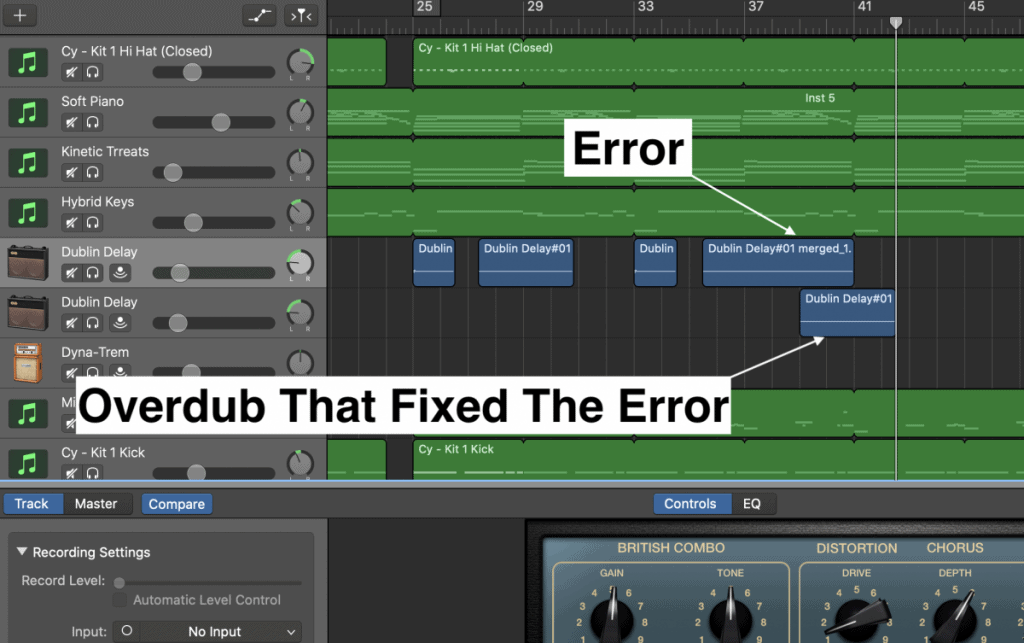
Cleaning up mistakes and errors in a guitar recording is so easy now as a result of digital audio workstations and other digital technology.
For example, if you wanted to re-record a guitar part, you could literally just hit record and then re-record the note in a second. Modern technology allows you to correct errors in a way that wasn’t normally possible before.
How you go about this varies a lot, but the main take-away is that you can quickly, and effectively, clean up errors and other problems in your recordings, including even minor details like a particular section where the guitarist accidentally struck an open string.
2) Creative Purposes

The ways in which you can use guitar overdubs for creative purposes are honestly limitless. It all depends on the mind of the player and what kind of sounds they want to create in their music.
Because of the convenience of digital recording, you can re-record as many parts as you want and add particular effects wherever you need.
It’s not uncommon for people to create YouTube videos and other content that’s meant to go viral in which musicians will create an entire song out of just one sound, for instance, maybe the sound of a door closing. The same thing could apply to a guitar as well.
3) No Time Limit on What Can Be Done
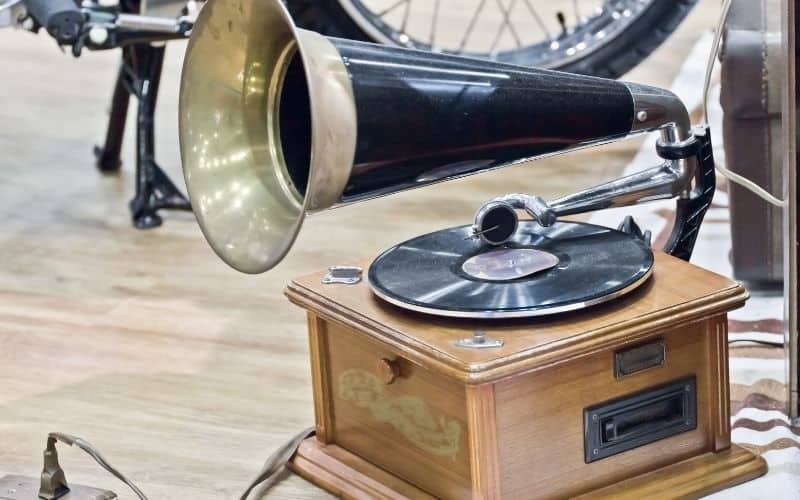
One of the greatest aspects of using overdubs is the fact that you can take a recording and overdub a sound over almost anything that you want.
For example, you could take a guitar recording from 100 hundred years ago and then record your own playing over top of it.
There are many examples of people having done this before, in fact, even things like samples, in a way, are an overdub. For example, a hip-hop producer might take a sample from an old funk, soul, or jazz song, and then rap over it.
This is very similar to an overdub, however, the main difference is that an overdub is typically done to a track before it has been completed, rather than after the fact.
Overdubbing Guitars – How to Do It
1) Record Your Guitar Part
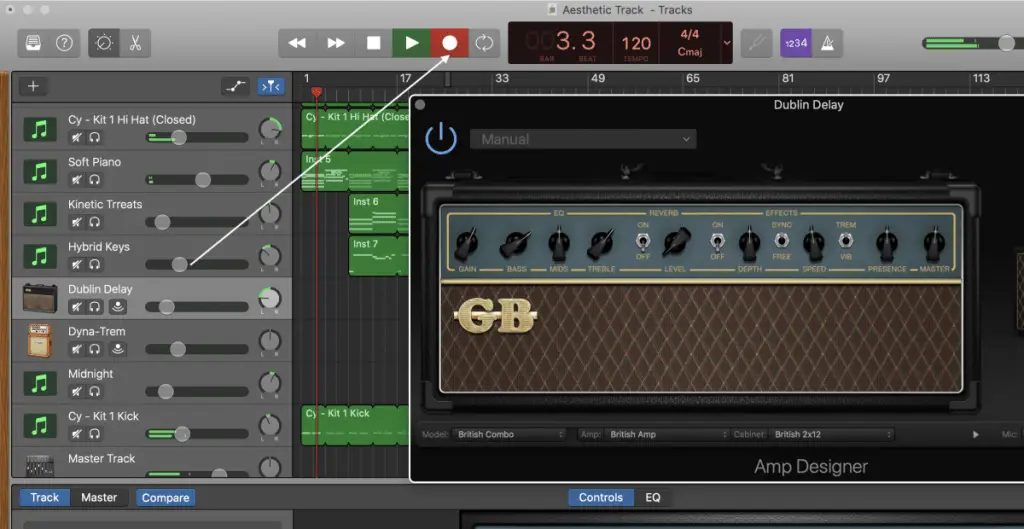
The first thing you want to do is record your guitar into your DAW using the appropriate gear. If you don’t know how to record guitar into DAW, know that you just need a few pieces of equipment to do so. You need a cable and an audio interface, such as the iRig HD 2 and that’s pretty much it.
Connect the audio interface to your computer and then your guitar to the audio interface, and there should be a big red button in your DAW that allows you to begin recording.
If you’re using a DAW like Garageband, for example, it has built-in presets using its Amp Designer which acts as an amplifier simulator.
Once have your guitar recorded into the DAW, you’ll notice that you have a recording in the workspace, and you can now drag and drop it anywhere you want, add processors to it, or duplicate it as many times as you need to.
You could even loop it forever if you wanted to. Another great way to loop a recording is with the RC-5.
2) Add A Second Layer Overtop of Your Recording or Use a Separate Track Region
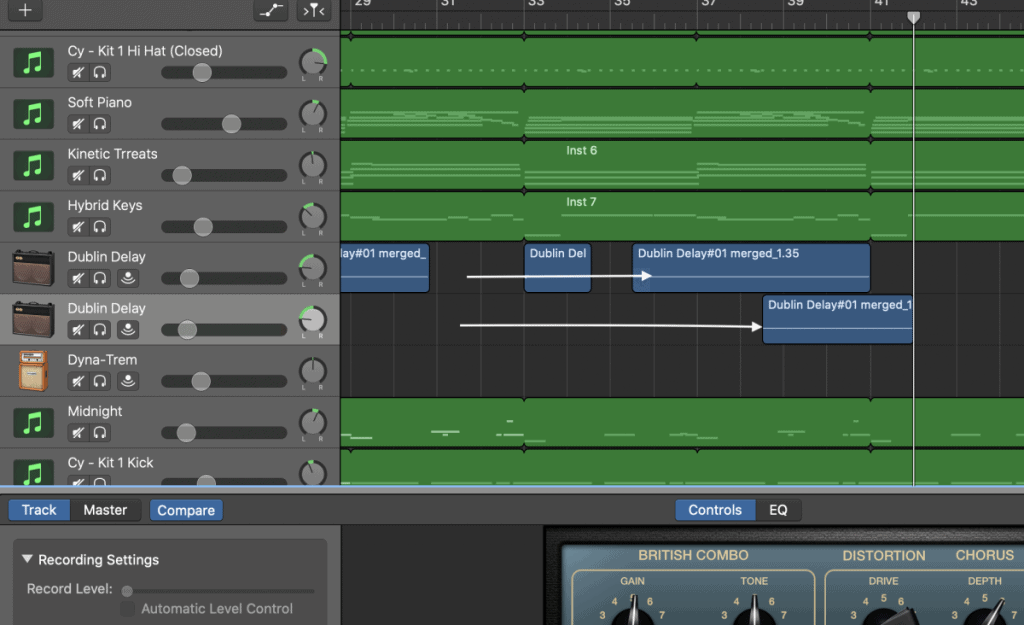
To overdub the guitar, you could do it in a number of ways. For example, you could literally re-record over the same recording in the same instrument track region as a way of adding more sounds, or you could set up an entirely different region and just have them playing at the same time.
One such example is the replacement of an improperly done bend. Truthfully, with software such as Melodyne – one of the best tools for any recording engineer – you could just adjust the pitch of the note manually in the case that the player didn’t get the note to the exact pitch they wanted.
Or, you could simply re-record the part and layer it over top of the pre-existing recording. If you wanted to re-record the guitar part as an overdub, you would just have to hit record in the same way and then re-record the same part either in a different track region altogether or overtop of the pre-existing one.
It’s really quite self-explanatory, you just have to record a different guitar part over another one.
3) Adding Processors and Effects to a Guitar Overdub
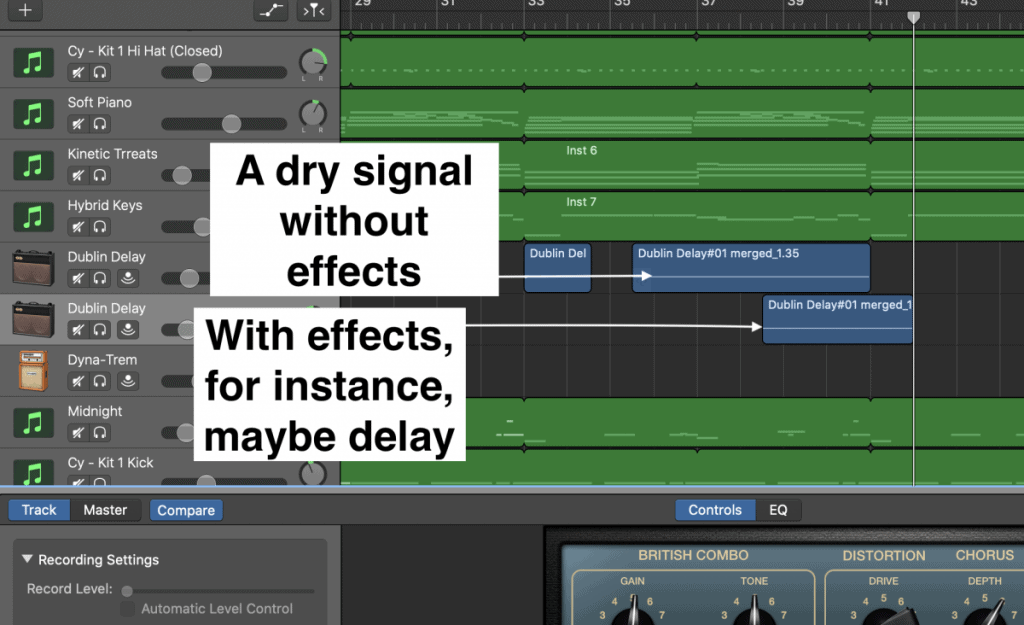
One of the amazing things about using a digital audio workstation is that you could record an endless amount of guitar overdubs or any other type of overdub for that matter, and then add plug-ins, processors, and effects to each one for an entirely different sound or effect.
For example, you could set up a flanger and a phaser on the one, and then add just a reverb or a delay to the other. This could also be done with guitar pedals (my guide) on one track and not the other.
Additionally, you can have one guitar overdub panned to the left and the right, another one slightly off-center, and then another one that’s slight to the right, but with very low volume and a lot of reverb as a way of making it seem as though the guitar recording is coming from far away in the mix.
There are countless ways of adding different overdubs to a recording with a digital audio workstation, you literally could have 100 of them if you needed it, which ultimately depends on how fast your computer is, how much power it has, and its memory capabilities.
4) Using a Guitar Overdub to Harmonize (Optional)
Another thing that can be done much easier now as a result of overdubbing and digital audio workstations is the act of harmonization, which, simply put, is when you record a guitar part or any other instrument section using the same notes but transposed up a particular interval, for example, up a perfect fifth, a major third, or up a major 7th if you wanted it to sound weird.
To do this, would you just have to figure out the exact notes of the recording, and then transpose them up a particular interval and then record the second guitar with the new notes.
Important Things to Understand About Guitar Overdubbing
As I’ve already said, overdubbing guitar parts has become incredibly easy over the last two decades because of digital audio workstations, for example, Logic Pro X, Ableton, Garageband, Fl Studio, or Pro Tools, or pretty much any other DAW for that matter.
Because of digital technology and the move away from tape recordings and other forms of analog, it’s possible to use a computer to record your sounds, which is much, much easier to edit, and it’s also much easier to duplicate and move around. There was a point in time where you would have to record guitar parts with a tape machine and cut different sections of tape and mesh them together.
Thankfully, we don’t have to do that anymore, and it’s incredibly easy to use a digital audio workstation like Garageband to duplicate as many tracks as you need to, add different processors and effects to the new track, or drop it anywhere you want in the DAW for arrangement purposes.
Another important thing to note about overdubbing is that it can be done for pretty much any instrument, sound, or recording. For example, it could be used to fix mistakes in a vocal recording or done for harmonization purposes.
YouTube Video Tutorial
Conclusion
Overdubbing became a common practice in the early 20th century, with Les Paul being the first notable guitarist who began using it in such a way that wound up revolutionizing the way we record guitar parts and other instruments today.
Essentially, guitar overdubs are the act of adding a guitar part over the top of another one, whether it be for cleaning up mistakes or for creative reasons.

 Written By :
Written By :